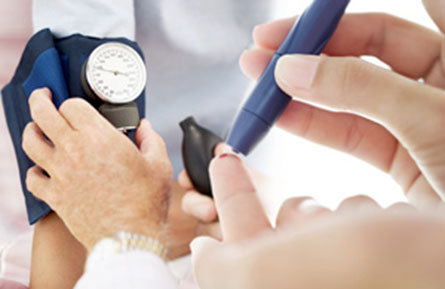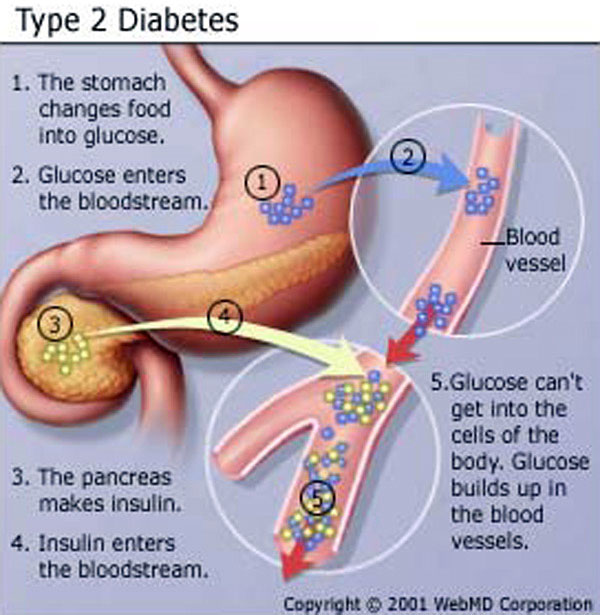With an abundance of vegetation that Allah (SWT) has blessed us with at our feet, we have a choice of many unadulterated foods that provide all the nutrients that we need. Allah gives us guidance about nutrition in the Qur’an (7:160) when He says, “Eat of the good foods We have provided for you.”
Many children are misguided when it comes to nutrition; often resulting in illnesses and disease. Sometimes, they are born with diseases that worsen as they grow older – for example, diabetes.
“If I don’t eat sugar, I blow up. My kidneys don’t work. When I eat sugar, it acts like a diuretic and I urinate gallons, and then there is no bloat,” complained Elida to her nutritionist.
Having lived on a diet high in meat protein, fat, sugar, alcohol and soft drinks, she was having problems sticking to the medication her doctor had prescribed and eliminating sugar.
She finally settled a diet her nutritionist had recommended of complex carbohydrates (whole grains, beans, vegetables), low fat, only an occasional snack containing sugar such as fruit, herbal teas and, now and then, apple juice.
She wasn’t allowed milk, butter, cheese or yogurt. This is the life of a diabetic – living off a diet for life that cannot be played with.
In 1989, an estimated 4% of the world population had diabetes. There were 12 million sufferers in Canada and America alone; and 2% of those living in U.K.
Currently, however, according to the American Diabetes Association, 16 million Americans have the disease; 800,000 new cases are diagnosed each year and it is the number one cause of amputations, blindness and kidney failure. Diabetes kills 180,000 people annually and 5 million people are walking around without the slightest idea that they have it.
The World Health Organization (WHO) predicts that diabetes will more than double by the year 2025, especially in Asia and Africa. Diabetes results from Western type diets and causes exhaustion of the adrenal glands, liver congestion and toxicity, endocrine depletion, and pancreatic insufficiency.
Until now, the young have been known to have Juvenile Diabetes (Type I), which is considered to be an auto-immune disease comprising 5 to 10 % of all diabetic cases. It is linked to viral infections and chemical toxicity (sometimes induced by prescribed drugs in treatment of illness).
The body is unable to produce enough of the hormone insulin, which is necessary for its utilization of the nutrients that it receives. Juvenile Diabetes, unlike Type II or Adult Diabetes, hits randomly; however, as adults, its victims become dependent on insulin from their previous drug treatments.
Pediatricians at the Children’s Medical Center in Cincinnati, U.S. report that between 1982 and 1994, Juvenile Diabetes doubled, leading them to believe that it is a consequence of lifestyle choices rather than genetics.
Now, also, 95% of all diabetes cases involving the young are Type II, which in the past was linked to increased body weight with increased age. There was an increase from 3% to 17% of non-insulin dependent Juvenile Diabetes from 1991 to 1994, with a higher rate among the 10 to 19 years age group.
Their findings were considered significant at the time because it was the only pediatric hospital in the world that served a metropolitan area of 1.7 million.
Type II diabetes takes decades to reveal itself and it usually occurs in women with a family history of the disease. It can declare itself during pregnancy, particularly if previous babies weighed in at 4 kg (almost 9 lbs.) or more at birth, posing a doubled risk of problems for mother and baby and a higher risk of neonatal death.
Normally, any increase in blood glucose causes the pancreas to release insulin, but when their overworked receptors become less responsive, they no longer trigger the process required to absorb excess glucose from the blood. There is an accumulation of sugar in the blood; then in the urine.
Stress is a major cause of diabetes as it emotionally triggers an increased sugar intake. In addition, the consumption of refined carbohydrates, caffeine, alcohol, street drugs and nicotine are major factors. A high fat diet contributes directly and indirectly to many cardiovascular diseases such as heart disease, hypertension, obesity and diabetes.
As a fragmented food (i.e., extracted from the whole plant), refined white sugar is deficient in nutritional elements and is 99.5% carbohydrates – the nutrients found in sugar cane are left behind in its waste. The consumption of refined white sugar leeches B vitamins, calcium, phosphorus, iron and other nutrients from our bodily reserves in an attempt to draw the missing companion nutrients for its digestion.
The body has to compensate from somewhere. This “siphoning” effect is the cause behind the gnawing sensation of hunger we get from eating sweets, which provokes binges as the “sugar hunter” searches for a means to become satisfied.
In a survey carried out a couple of years ago by the Atlanta, U.S. based Center for Disease Control and Prevention (CDC), 13.5% of obese patients had Type II diabetes in comparison to 3.5% of those with normal weights.
A study by Dr. Alan Shulndier of the University of Maryland, U.S. provided evidence towards the growing understanding that a lack of exercise also contributes to diabetes – reducing the utilization of blood glucose, which creates an accumulation in the bloodstream.
Doctors are now aware that children as young as 10 can be diabetic.

In contrast with Type 2 Diabetes, DM Type 1 has an absolute insulin deficiency due to destruction of islet cells in the pancreas.
Researchers are still investigating all the ways in which high blood-sugar levels cause damage. Sufferers of diabetes experience great thirst, weight loss, and degenerative changes within the capillary system as sugar weakens the capillary walls and clogs the small vessels.
The body becomes deprived of its prime energy supply as muscle and nerve cells slow-down, manifesting in lethargy and irritability in the early stages.
Other known effects are on the arteries, the eyes, the kidneys and the limbs as hemorrhages destroy the eye’s retina and impaired circulation leads to ulcers in the legs and feet for which amputation may be the only cure. The risk of heart disease doubles for men with diabetes; for women, it increases fourfold.
The signs of diabetes include a need to drink copious amounts of water, constant hunger, unaccountable lethargy and obesity in some but not all cases, frequent urination, blurred vision, numb or tingling extremities, frequent skin infections, slow healing cuts and bruises.
Denial can be a powerful obstacle to treatment. Those that have been treated for a while for diabetes often become worn-down by the thought of a lifetime of vigilance. For children, it may create a sense of isolation and fatigue. Individualized educational and nutritional counseling is often required.
Diabetes can be maintained without drugs or insulin, but this should only happen when the diabetic is able to maintain a regime that they are comfortable with in social and non-social situations. The diet should consist of simple meals including vegetables.
A child’s meal should be planned with moderate protein, high fiber and low fat. An occasional takeout of pizza or chicken doesn’t hurt. Snacks should be kept to a minimum as frequent eating prevents the body from digesting food properly.
Exercise as a family (at least half-an-hour daily). Unfortunately, school activities involve more sitting than anything else. Exercise processes the glucose in the blood. Go visiting, for a walk, play a family game of football – make it fun. Who doesn’t need to exercise?
Naturopaths recommend the following diet:
Unrefined carbohydrates, vegetables (grains and beans), yogurt, nuts, tofu, fish, organic fowl or meat, raw or lightly steamed vegetables and fibers;
Insulin producing foods include Jerusalem artichokes, Brussel sprouts, cucumbers, green beans, garlic, oatmeal/oat flour products, soy beans (be careful of genetically engineered varieties) and avocados occasionally.
One should avoid fruits and fruit juices, all refined sugars and white flour products, white rice, alcohol and street drugs (this should go without saying but I will still say it), smoking, saturated fats, and sorbitol chemical sugar substitutes which cause cataracts.
Herbalists recommend raw garlic, which helps to curb the increase of sugar in the blood and causes the kidneys to produce large amounts of urine.

References:
- MSNBC; Newsweek; Dictionary of Science, Hutchinson; Guide To Homeopathy, Dr. A. Locke & Dr. N. Geddes; Food & Healing, A. Colbin; Natural Remedy for Women, D. Stein. “Alternative Medicine,” Readers Digest. WDDTY, vol.7, no. 4.
This article was first published in 2003 and is currently republished for its importance.
